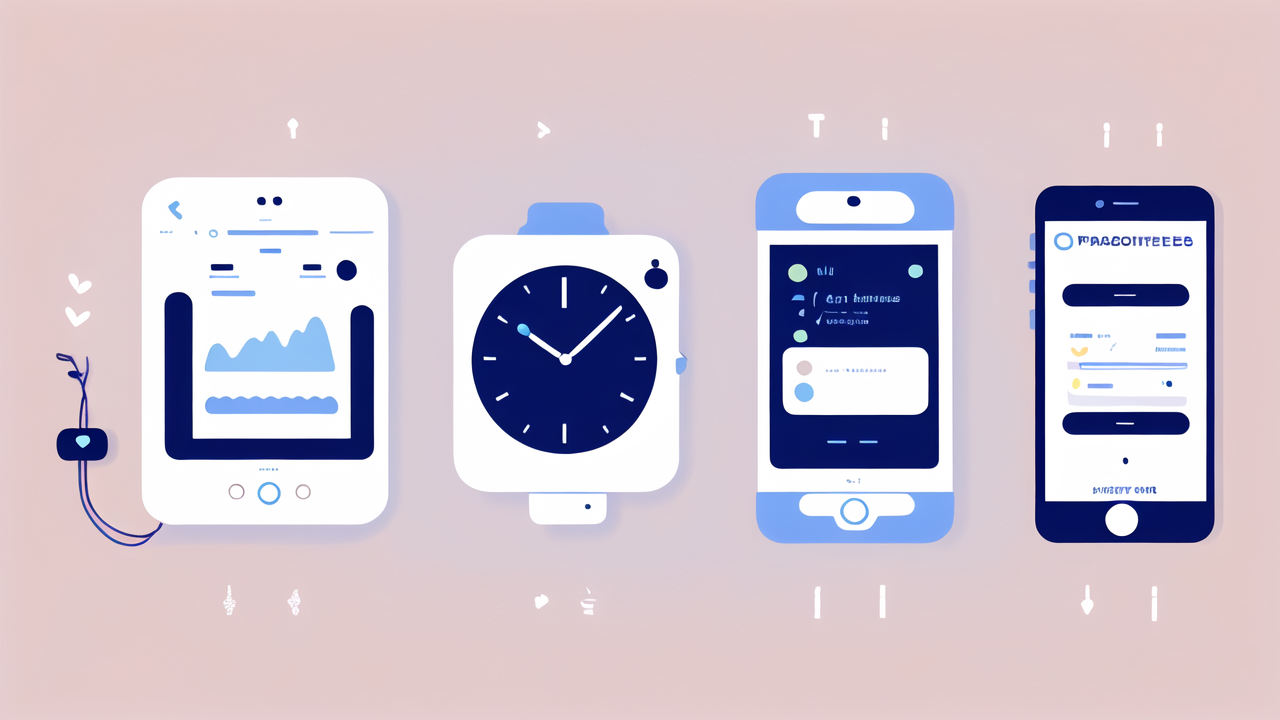The Evolution of Fitness Tracking: From Wrist Bands to Smart Watches
The Beginnings of Wrist-Worn Fitness Devices
Fitness tracking began with simple pedometers. These devices counted steps and estimated distance walked.

Early wrist-worn trackers were basic. They mainly tracked steps, calories, and sleep patterns.
Key features of first-generation devices:
- Step counting
- Calorie burn estimation
- Sleep tracking
- Basic smartphone notifications
These devices were lightweight and had long battery life. They were popular among casual fitness enthusiasts.
However, they lacked advanced features and accuracy. This led to the development of more sophisticated devices.
Transition to Smart Watches: Features and Advancements
Smart watches emerged as the next big thing in wearable tech. They combined fitness tracking with smartwatch features.
This transition brought more advanced sensors and capabilities.
New features in smart watches included:
- Heart rate monitoring
- GPS tracking
- Touchscreen displays
- App support
- Music playback
These devices offered a more complete health and fitness picture. They could track workouts, monitor heart health, and
provide detailed fitness insights. Smart watches also added convenience with smartphone integration.
Current Trends in Fitness Wearables
Today's fitness wearables are more advanced than ever. They offer a wide range of health and fitness features.
Current trends include:
- ECG monitoring
- Blood oxygen level tracking
- Stress management tools
- Women's health tracking
- Advanced sleep analysis
Many devices now use AI to provide personalized insights. They can suggest workout plans and recovery times.
Some smart watches can even detect falls and call for help. The focus is now on overall health, not just fitness.
Top-Rated Smart Bands and Watches for the Fitness-Conscious
Evaluating the Features of Top-Selling Smart Bands
Smart bands remain popular for their simplicity and affordability. They offer core fitness tracking features in a

compact form.
Top features of smart bands:
- Step counting and distance tracking
- Heart rate monitoring
- Sleep tracking
- Water resistance
- Long battery life
Popular smart bands include the Fitbit Charge series and Xiaomi Mi Band. These devices offer good value for money.
They're ideal for users who want basic fitness tracking without the bulk of a smartwatch.
Smart Watches with Advanced Fitness Capabilities
Smart watches offer more advanced features for serious fitness enthusiasts. They combine fitness tracking with
smartwatch functionality.
Key features of fitness-focused smart watches:
- GPS tracking
- Multi-sport modes
- Advanced heart rate monitoring
- VO2 max estimation
- Recovery time suggestions
Top contenders in this category include the Apple Watch Series 7 and Garmin Fenix series. These devices offer
comprehensive fitness tracking and smartwatch features. They're suitable for athletes and serious fitness buffs.
How to Choose the Right Smart Band or Watch for You
Choosing the right device depends on your needs and preferences. Consider these factors when making your decision:
- Fitness goals: Do you need basic tracking or advanced metrics?
- Budget: Smart bands are generally cheaper than smart watches.
- Battery life: Smart bands typically offer longer battery life.
- Smartphone compatibility: Ensure the device works with your phone.
- Design preferences: Do you prefer a slim band or a watch-like design?
Think about which features are most important to you. If you're a casual user, a smart band might suffice. For more
serious athletes, a smart watch could be a better choice.
The Impact of Smart Bands and Watches on Exercise Regimens
Integrating Technology into Fitness Routines
Smart bands and watches have changed how people approach fitness. They provide real-time data and motivation.

Ways these devices enhance workouts:
- Real-time heart rate monitoring
- GPS tracking for outdoor activities
- Guided workouts and training plans
- Progress tracking and goal setting
- Reminders to move and stay active
These features help users stay accountable and motivated. They can track progress over time and set new goals.
Many people find that wearing a fitness tracker encourages them to be more active.
Success Stories: How Smart Devices Motivate Users
Many users report positive changes after adopting smart fitness devices. These devices can provide the motivation
needed to stick to fitness goals.
Common success stories include:
- Weight loss achievements
- Improved sleep patterns
- Better management of chronic conditions
- Increased daily activity levels
- Completion of fitness challenges
Users often cite the data visualization and goal-setting features as key motivators. Seeing progress in real-time
can be very encouraging. Social features, like sharing achievements, also help keep users engaged.
Future Outlook: Trends to Watch in Fitness Technology
The future of fitness wearables looks exciting. New technologies are set to make these devices even more useful.
Emerging trends to watch:
- Non-invasive blood glucose monitoring
- Advanced hydration tracking
- Body temperature monitoring
- Improved AI for personalized coaching
- Integration with smart home devices
We may see more focus on preventive health features. Devices could help detect early signs of health issues.
There's also a trend towards more discreet, fashionable designs. The line between fitness tracker and jewelry may blur.
As technology advances, these devices will likely become even more integral to our health and fitness routines.
They'll provide more accurate data and more personalized insights. This could lead to better health outcomes for many users.




Leave a comment
This site is protected by hCaptcha and the hCaptcha Privacy Policy and Terms of Service apply.